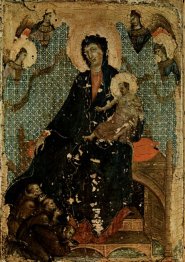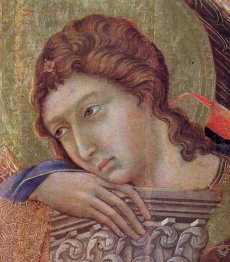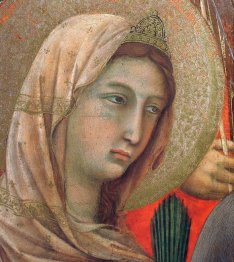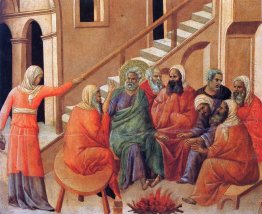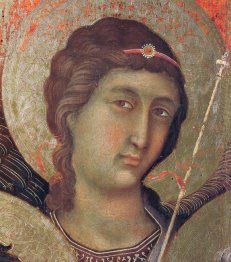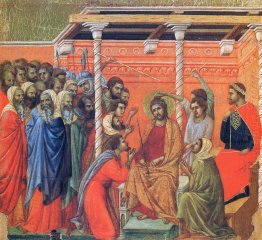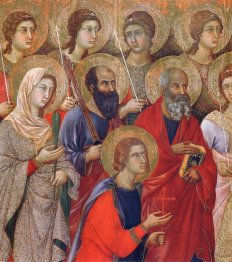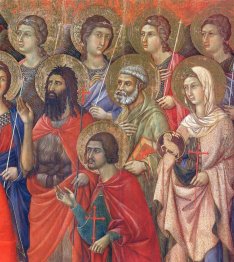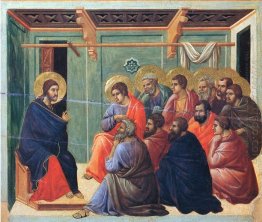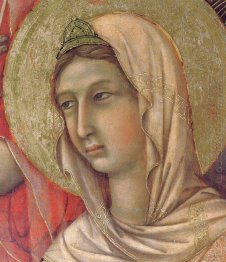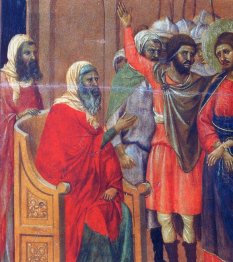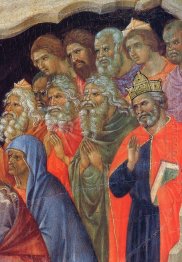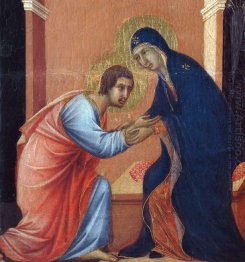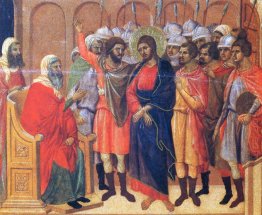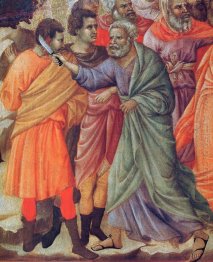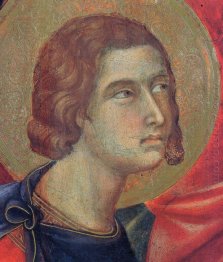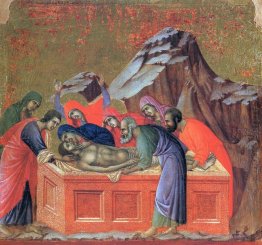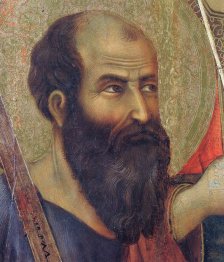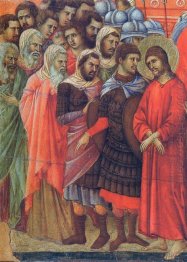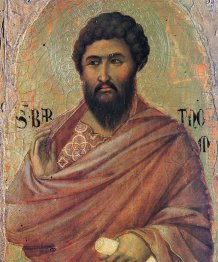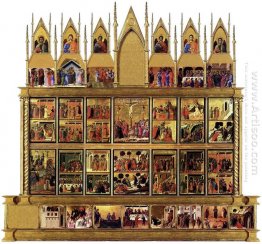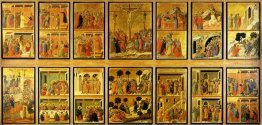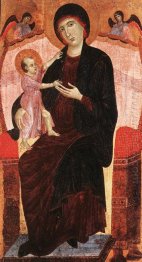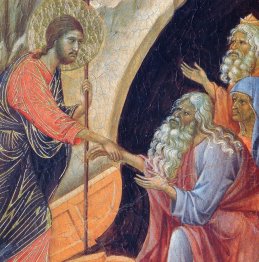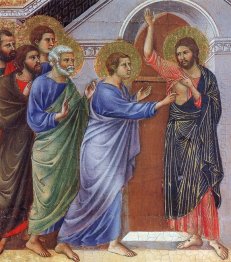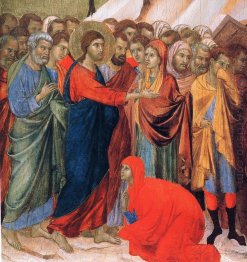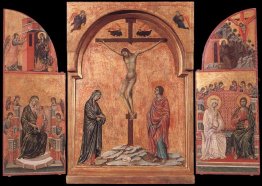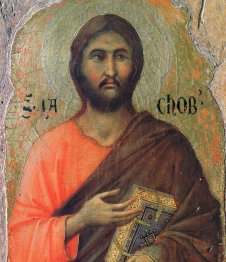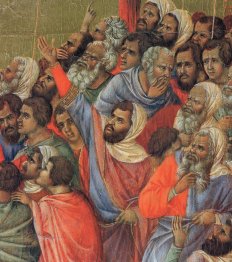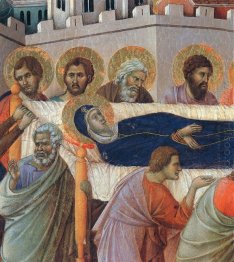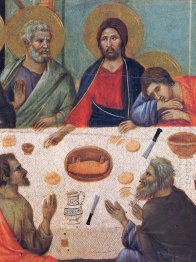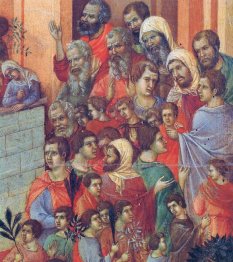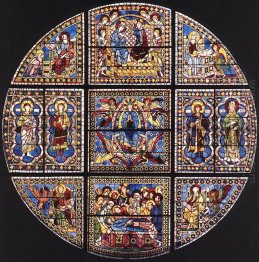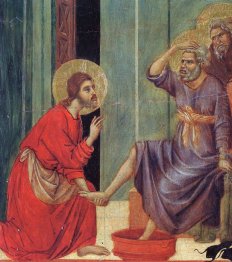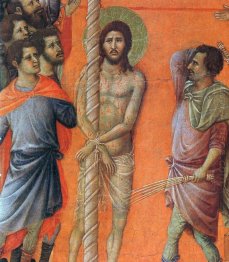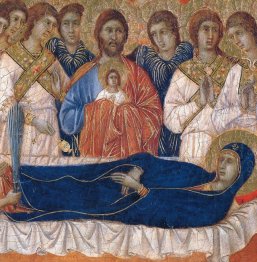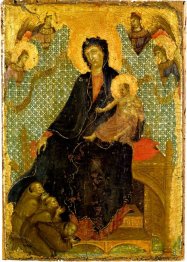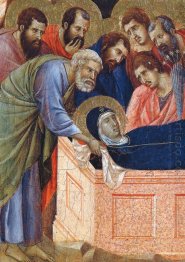Duccio
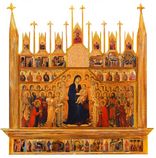
Duccio di Buoninsegna was one of the most influential Italian artists of his time. Born in Siena, Tuscany, he worked mostly with pigment and egg tempera and like most of his contemporaries he painted religious subject matters. He has influenced Simone Martini and the brothers Ambrogio and Pietro Lorenzetti, among others.
Duccio just didn't have the powerful naturalism that made the art of Giotto so revolutionary in western tradition. Rather, Duccio sums up the beauty of centuries of Byzantine tradition and infuses it with a breath of the new humanity.
He worked mostly with pigment and egg tempera and like most of his contemporaries he painted religious subject matters. He has influenced Simone Martini and the brothers Ambrogio and Pietro Lorenzetti, among others.
His works include the Rucellai Madonna (1285) for Santa Maria Novella (now in the Uffizi) and the fabled Maestà (1308-11), his masterpiece, for Siena's cathedral. The centre of the Maesta depicts the Virgin and Child enthroned and surrounded by angels and saints.
Duccio certainly studied these painters and was influenced by them. Notably evident in his style are the influence of the older painter Guido da Siena, with the serene dignity of his figures, permeated by lyrical tenderness and grace, in the now-fading stylized postures of the Byzantine tradition, and of the master of the St. John the Baptist Altarpiece in the Pinacoteca Nazionale of Siena, with his complex Byzantine iconography and his vivid, dense colouring. Duccio was able to draw from sources outside Siena as well: from the combination of linear stylization and Hellenistic types that characterized the illustrations of books imported from Constantinople and also from contemporary French Gothic miniatures, with their lively tone and lyrical, animated stylizations of clothing and gesture. Duccio may also have travelled to Florence in his early years, coming into contact with Cimabue, but such an explanation is not entirely necessary to account for the formation of his style. In fact, in Duccio’s only certain work prior to the Madonna Rucellai, echoes of Cimabue are even less apparent than in the Rucellai altarpiece. The conclusion that Duccio was nothing more than a follower of Cimabue at the time he painted the Madonna Rucellai is implausible and overlooks the originality, as well as the excellence, of the work. If, in fact, he was in 1285 entrusted with a work of such significance at Florence, his reputation must have already been established and have spread beyond the confines of his native Siena.





